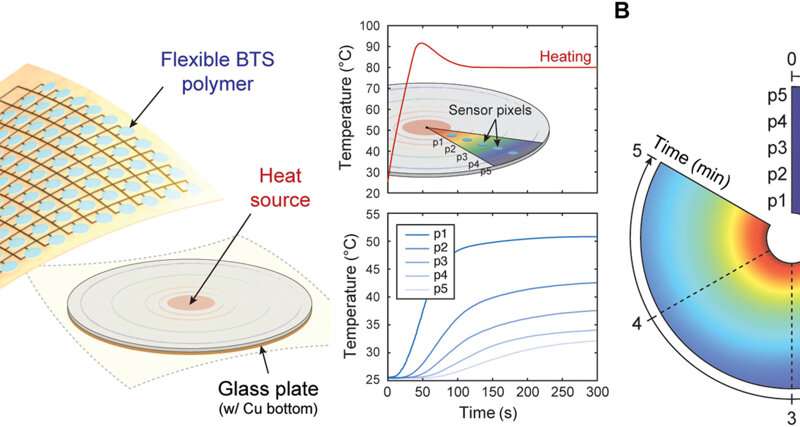Phys.org February 20, 2023
Replicating the molecular structure and functional motifs of biological compounds often provide clues to advance material designs and offers a blueprint for unprecedented functionalities. An international team of researchers (USA – Caltech, South Korea) has developed a flexible biomimetic thermal sensing (BTS) polymer that was designed to emulate the ion transport dynamics of a plant cell wall component, pectin. Using a simple yet versatile synthetic procedure, they engineered the physicochemical properties of the polymer by inserting elastic fragments in a block copolymer architecture, making it flexible and stretchable. The thermal response of the flexible polymer outperformed current state-of-the-art temperature sensing materials, including vanadium oxide by up to two orders of magnitude. Thermal sensors fabricated from these composites exhibit a sensitivity that exceeds 10 mK and operate stably between 15° and 55°C, even under repeated mechanical deformations. They demonstrated the use of the new flexible BTS polymer in two-dimensional arrays for spatiotemporal temperature mapping and broadband infrared photodetection… read more. Open Access TECHNICAL ARTICLE

… Schematic diagram of a flexible thermal sensor for large area, multipixel temperature mapping…. Credit: SCIENCE ADVANCES, 10 Feb 2023, Vol 9, Issue